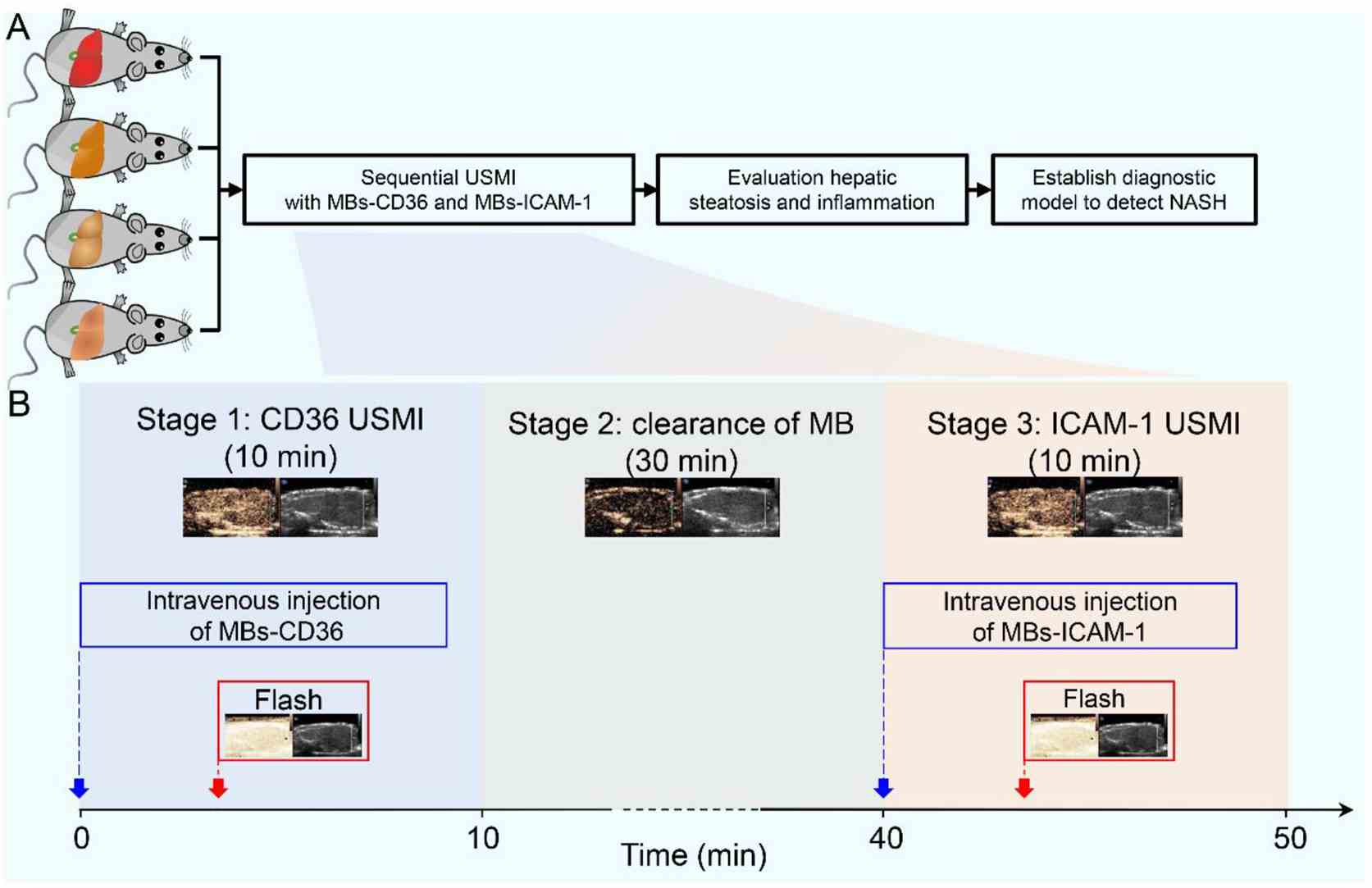Advancing Noninvasive Diagnosis of NASH: Potential of Sequential USMI in NAFLD/MAFLD
Published 24 January, 2024
Non-alcoholic fatty liver disease (NAFLD), recently renamed metabolic dysfunction-associated fatty liver disease (MAFLD), is a spectrum of diseases that ranges from non-alcoholic fatty liver (NAFL) to non-alcoholic steatohepatitis (NASH).
Invasive liver biopsy continues to be the gold standard for diagnosing NASH through the histopathological assessment of liver steatosis, ballooning, and lobular inflammation. However, this method does have its limitations, including sampling bias, low patient acceptance, and potential complications. Clinical imaging techniques such as ultrasound and magnetic resonance imaging can detect or quantify liver steatosis but are unable to differentiate between NASH and NAFLD. Therefore, there is a need to identify noninvasive parameters associated with NASH that can serve as surrogate markers for these histologic features.
In a study published in the KeAi journal Liver Research, a group of Chinese researchers detailed a sequential ultrasound molecular imaging (USMI), an emerging strategy for the identification of NASH by visualizing hepatic steatosis and inflammation. Notably, distinct microbubbles (MBs) were used to target CD36 and ICAM-1 individually, rather than a dual-targeted MB. This approach allows for the differentiation of the signal source (either steatosis or inflammation) and the identification of the predominant pathological change.
“As a noninvasive diagnostic tool, this strategy has the potential to assist in clinical therapeutic decision-making and contribute to drug development for NASH,” says Tinghui Yin, lead author of the study. “Furthermore, among various sequential USMI-based diagnostic models, the serial testing model showed high diagnostic performance in detecting NASH, with 95% sensitivity, 97% specificity, 95% positive predictive values, 97% negative predictive values, and 96% accuracy.”
CD36 is known to be associated with liver steatosis, while elevated ICAM-1 levels are seen in the progression of liver inflammation. Hence, quantitatively visualizing hepatic CD36 and ICAM-1 can provide valuable information in determining the extent of hepatic steatosis and inflammation. This achievement brings researchers one step closer to the ultimate objective of establishing a viable noninvasive approach for detecting NASH.

Contact author name, affiliation, and email address: Tinghui Yin, Department of Medical Ultrasound, Laboratory of Novel Optoacoustic (Ultrasonic) Imaging, The Third Affiliated Hospital of Sun Yat-sen University, Guangzhou, Guangdong, China. E-mail: yinth3@mail.sysu.edu.cn
Funder: This work was supported by the Science and Technology Planning Project of Guangzhou, China (No. 2023A03J0216); the National Natural Science Foundation of China (No.82272021); the Natural Science Foundation of Guangdong Province, China (No.2021A1515010635) and the Major Talents Programme of the Third Affiliated Hospital of Sun Yat-sen University (No.P02445).
Conflict of interest: Rongqin Zheng is an editorial board member for Liver Research and was not involved in the editorial review or the decision to publish this article. The authors declare that there are no conflicts of interest.
See the article: Sha, T.T., et al., Sequential ultrasound molecular imaging for noninvasive identification and assessment of non-alcoholic steatohepatitis in mouse models, Liver Res, Volume 7, Issue 4, 2023, Pages 342-351. https://doi.org/10.1016/j.livres.2023.11.002

